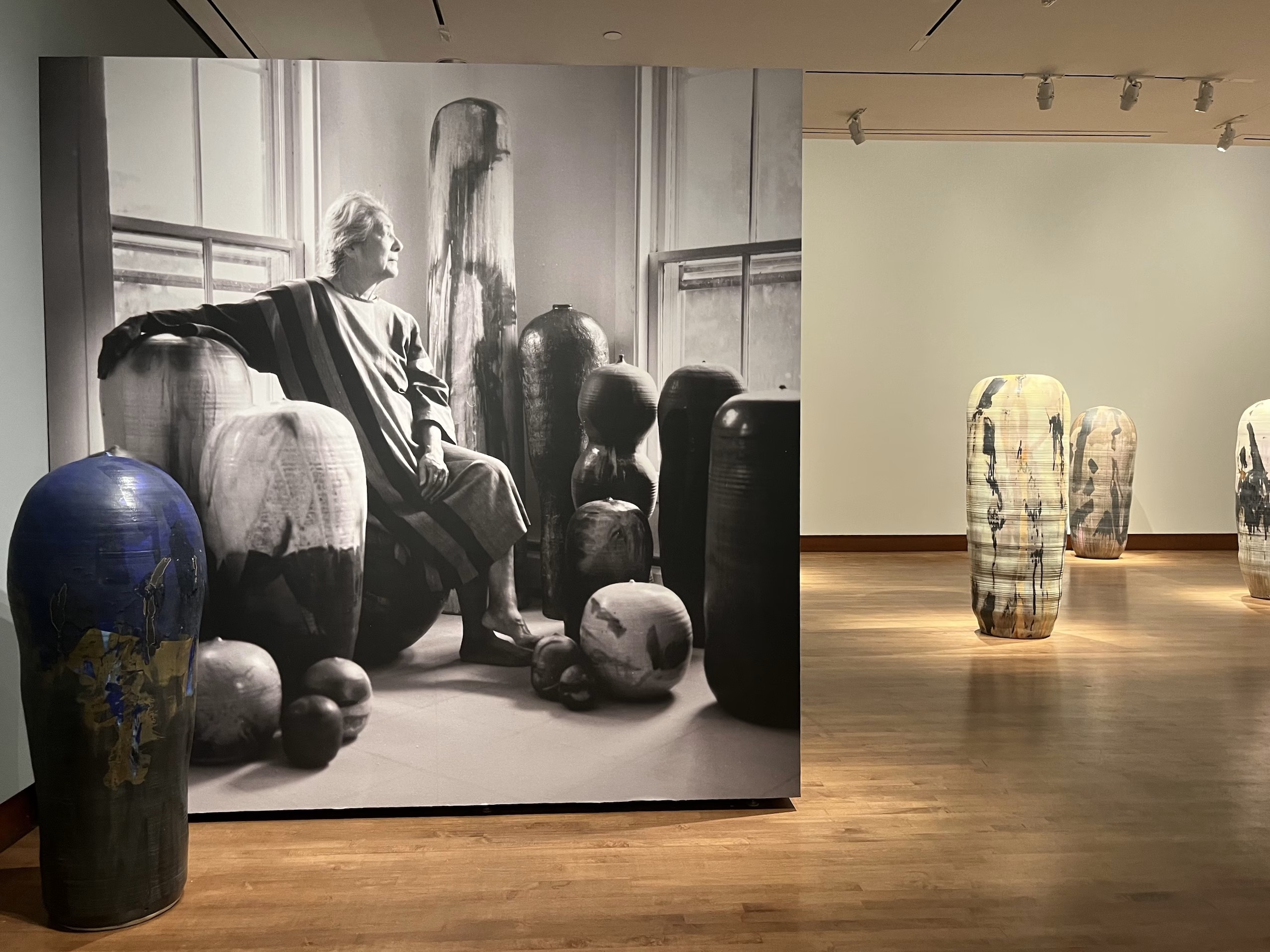How can a ceramic vessel spread across a gallery floor like planets that have completed their orbits? The work of Japanese-American artist Toshiko Takaezu provides the breathtaking answer to this very question. From the 1950s until her death in 2011, spanning six decades, Takaezu created non-functional ceramic forms that fused art with the human spirit and the forces of nature.
“Worlds Within,” the major retrospective now on view at the Chazen Museum of Art, brings together Takaezu’s oeuvre in the most comprehensive presentation in twenty years. Upon entering, rounded forms bathed in purple, turquoise, and metallic earth tones—glazed as if kissed by light—lie scattered across glittering volcanic sand. They resemble cosmic orbs inspired by the 1969 Apollo Moon landing: suspended in weightlessness, ready for launch.
The Interior of Silence and a Legacy of Resistance
Throughout her career, Takaezu fought marginalization as an Asian-American woman in a field dominated by white men, choosing “secondary disciplines” like ceramics and textiles. Yet through unrelenting determination, she earned her rightful place as one of the most significant forces in ceramic art history. Her touch is far gentler than Peter Voulkos’s aggressive, fractured forms; her art reflects a quiet reverence that emerges slowly from earthly tools and fluid surfaces.
In Takaezu’s awe-inspiring practice, the unseen is as important as the seen. Her works from the 1960s—labeled “closed forms”—no longer fit the category of pot or vessel; they simplyily exist as beings. Takaezu emphasized the interiors of these closed forms with equal conceptual weight. At one point, she even invited viewers to shake the ceramic fragments hidden inside, to “hear” the song of their inner worlds, all while preserving the integrity of the mystery.
The trace of the artist’s hands is everywhere: the ridges left by fingers pulling clay upward on the potter’s wheel, the seams formed by hand-kneading… When this touch merges with the gestural flow of glaze, even the densest sculptures transform into light, watery forms woven with hints of mist, rain, and wind. Through her works, Takaezu also contributed to the legacy of women artists who defied the hierarchy of craft, collaborating in freedom and trust.
The exhibition culminates in the human-scale totems of the Star Series, named after Dogon or Egyptian celestial bodies—an awe-inspiring testament that, toward the end of her life, Takaezu’s two small hands had become channels for the powers of the universe.
Exhibition Details
- Artist: Toshiko Takaezu
- Title: Worlds Within
- Venue: Chazen Museum of Art, University of Wisconsin, Madison
- Dates: Continues through December 23














